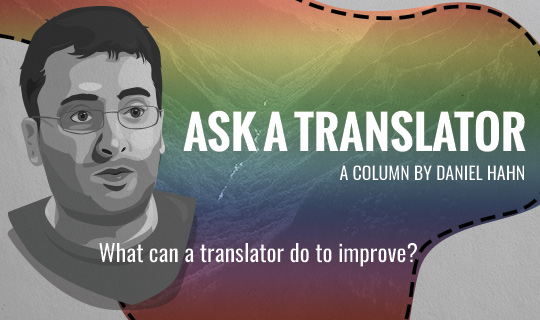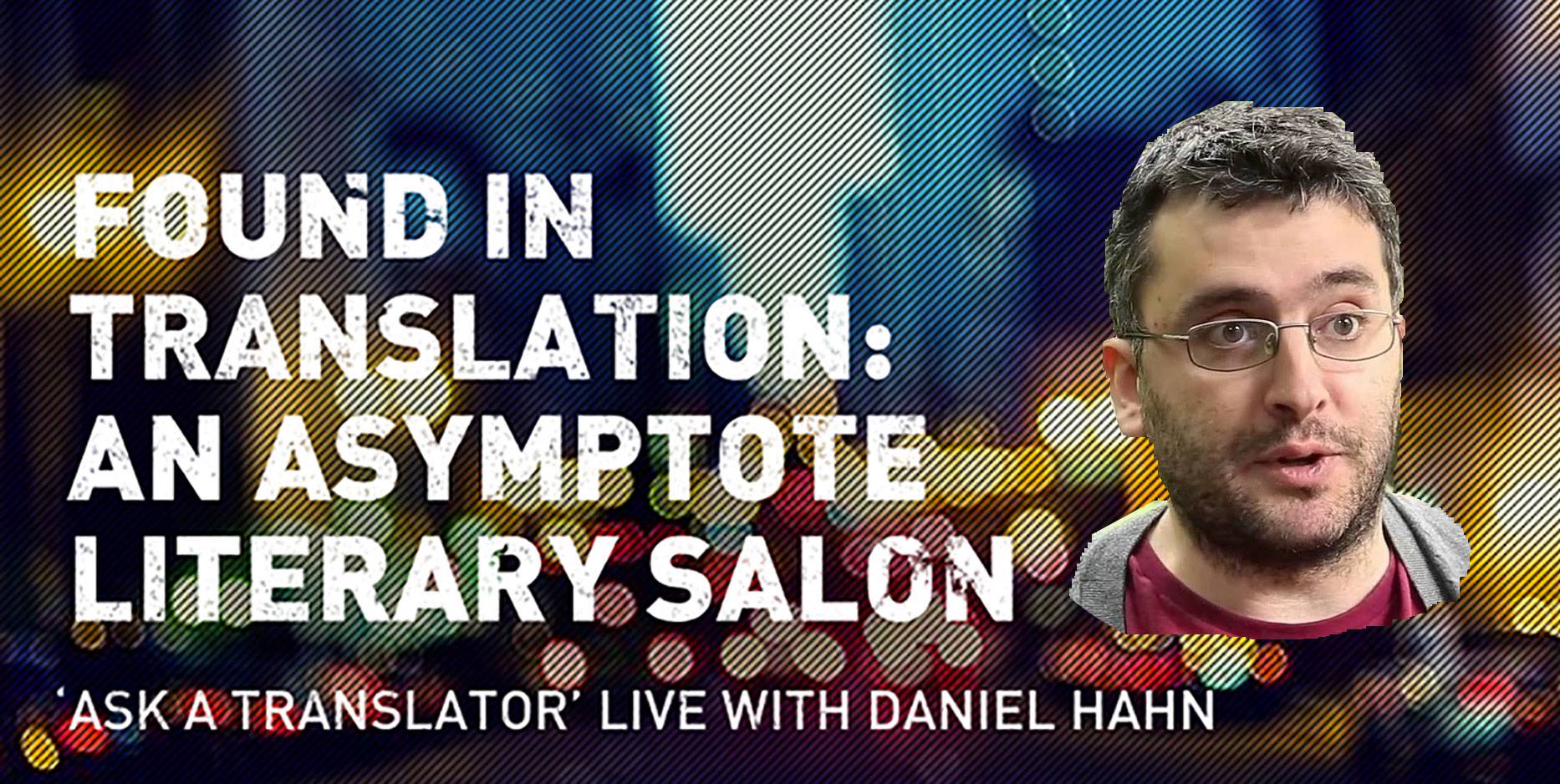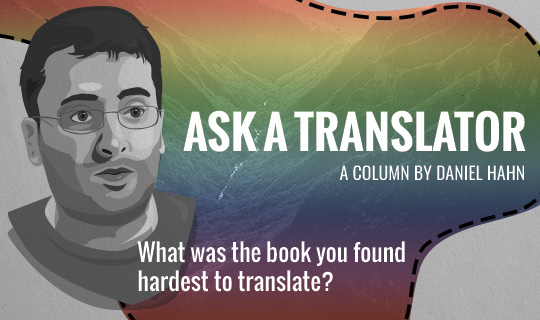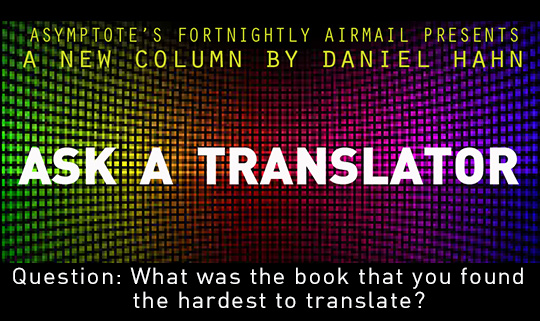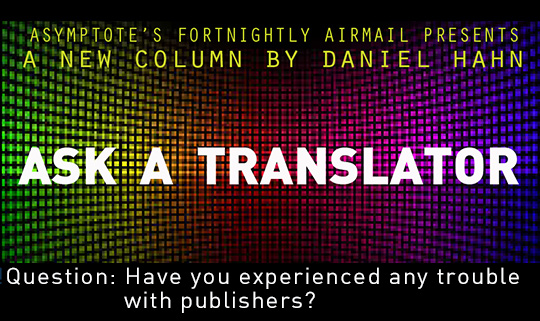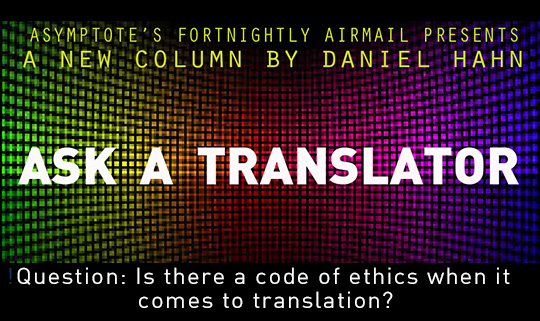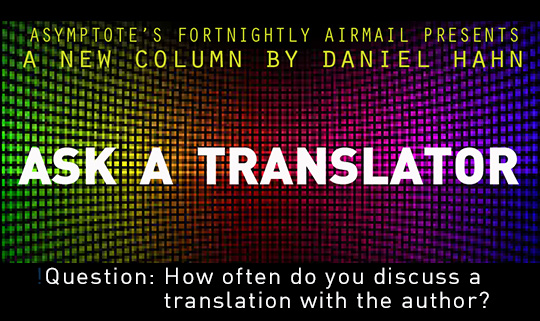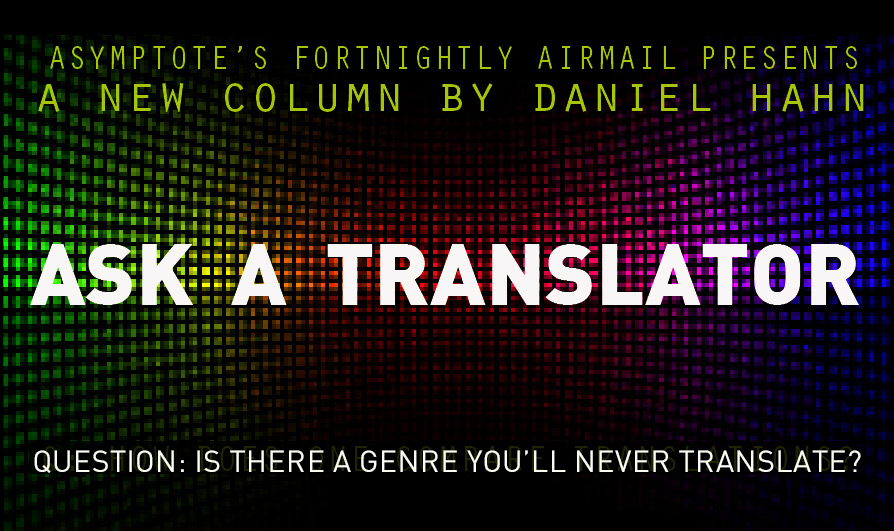“Ask a Translator,” a new feature in which acclaimed writer, editor and translator Daniel Hahn answers reader questions about the ins and outs of literary translation, debuted in Asymptote‘s fortnightly airmail ten days ago (subscribe here). Since not all blog readers may have subscribed to the airmail, we decided to reprint this hugely popular column today!
Hahn has translated Nobel laureate José Saramago, among many distinguished others, and served as Chair of the Translators Association of the Society of Authors, and National Program Director at The British Centre for Literary Translation. For his first monthly column, Daniel picked a question from reader Raimy Shin to answer:
When comparing two translations of the same text, what does one look out for to determine which is the superior translation? Or does it all come down to different style?
Translation is never a neutral act. It cannot happen without interpretation or personality, and it can’t happen without context. Which also means one of the reasons it’s hard to compare translations, even of the same text, is that no two translators will be aspiring to quite the same thing. Certainly the premise behind the question is entirely correct—any two translations of anything will differ, and those differences will have some significance. But those differences won’t always allow you to evaluate the versions side by side on the same metric scale.
You can assess a translation—like any work of art—by its achievement of success in its own terms, how it manages what it’s set out to do. You can evaluate, too, whether you think that’s a thing worth doing at all. But the decision as to which of two translations is superior assumes they share the same goals. To take a crudely exaggerated example—say you’re trying to compare King Lear, the Sistine Chapel ceiling and chocolate ice cream. Which is better? Impossible to say. They’re all supremely good examples of the kind of thing they are. If they were all judged by the same criteria, sure, that would be easier, but also kind of meaningless given their categorical differences. (Which of the three is the best play? Well, King Lear, but that hardly seems like a fair fight, does it?)
Now, when a publisher commissions me to translate a novel, I do work under the pretence that I’m writing not a translation but the translation. That’s the pretence, and aspiration—as though what I’m writing is not personal and defined by its million individual choices, and not contingent. And yet I know, of course, that it must be, because another translator will notice things in the original that I don’t, or I’ll choose to privilege things that she won’t; because my palette for expression in English will be different from hers, because we all as writers of English have languages that are distinct, words or constructions we particularly like or don’t. The fact that my English is (mostly) British and (mostly) 21st century will play obviously into what I produce. And what about that publisher—am I producing a translation for a big commercial publisher, or for an academic publisher, or for a “classics” list? Those things, and the assumed readerships they imply, will inform my intentions, too. (If you’re translating a play, is it for the sort of publication where you want every cultural detail preserved and explained or is it for performance where actors have to be able to speak the lines and you have to remember to punctuate in such a way that they can occasionally breathe?) As I say, the process is never neutral.
Your question pertains, mostly, to pretty long-lived texts (it’s unusual for a modern work to be translated multiply), which means that translations can themselves differ in period. Even within Tolstoy’s lifetime there were several competing English Wars and Peaces, each one working to a different agenda from Rosemary Edmonds in the 1950s, Anthony Briggs in the early 21st century, or the many in between. Each translators will have understood her/his role differently. (Should they seek to be invisible, hiding the fact that the book’s translated, making it sound naturally English, or draw attention to its foreignness? As much as anything, this is a matter of politics and fashion.) They will have made different assumptions about what their readers want, and how much their readers know. Are they working for scholarship, or to make a great story as accessible as possible to newcomers?
These questions reveal nothing about which translation is “superior”, but rather indicate their differences in intent. A translation of a comic novel might produce more or less straight, stone-dead translations of the jokes with footnotes to explain the cultural references that underpin them; or it might reconstruct the jokes, changed to make Anglophones laugh, thereby losing some of the cultural specificity but obviating the need for reader-distracting footnotes. Is one of these decisions “superior”? Well, it depends what you like, what you want.
Go see Romeo and Juliet three times. One production might speak the verse beautifully, making you notice details you’d not noticed before. Another might be brilliantly paced, a really dramatic theatrical experience. A third might be a film, or Prokofiev, or West Side Story. They’re all the same, and not the same. Translations always are.
Some years ago when I finally decided to read Don Quixote in English, I chose Edith Grossman’s translation. I knew I wanted something more or less recent. I knew hers would be careful and sensitive, but also energetic, and I knew she also had the skill to make me laugh in the funny bits. I could have argued, of course, that the closest experience to reading Cervantes would have been Thomas Shelton’s translation, which is four hundred years old and would have been read by Cervantes’s own contemporaries (Shakespeare among them, of course). But I wanted something that bridged the gap between Cervantes and me in a certain way. Grossman’s translation was the perfect particular translation for me, but in part what that means is it did exactly what I wanted a translation of Quixote to do for me at that moment. It captured Cervantes’s book, but did it in a way that suited my sensibility, and what I like as a reader.
Does this mean there’s never any difference in quality between one translation and another, and it’s all a matter of taste, with everything indiscriminately valid? Of course not. Some translations are sophisticated and sensitive and effective; some display a profound failure to understand an original and a total inability to write pleasing, supple prose to replicate it. Some things are just mistakes. But difference is often just difference, too. So instead of assuming that one of two translations is necessarily superior and the other more flawed, consider what the differences tell us about what precisely the translator is actually trying to do and why. (I love books with a Translator’s Note.) Only then can you try to gauge whether it’s a success, but according to its own criteria, not somebody else’s.
Enjoyed this column? Subscribe to the next one here.


